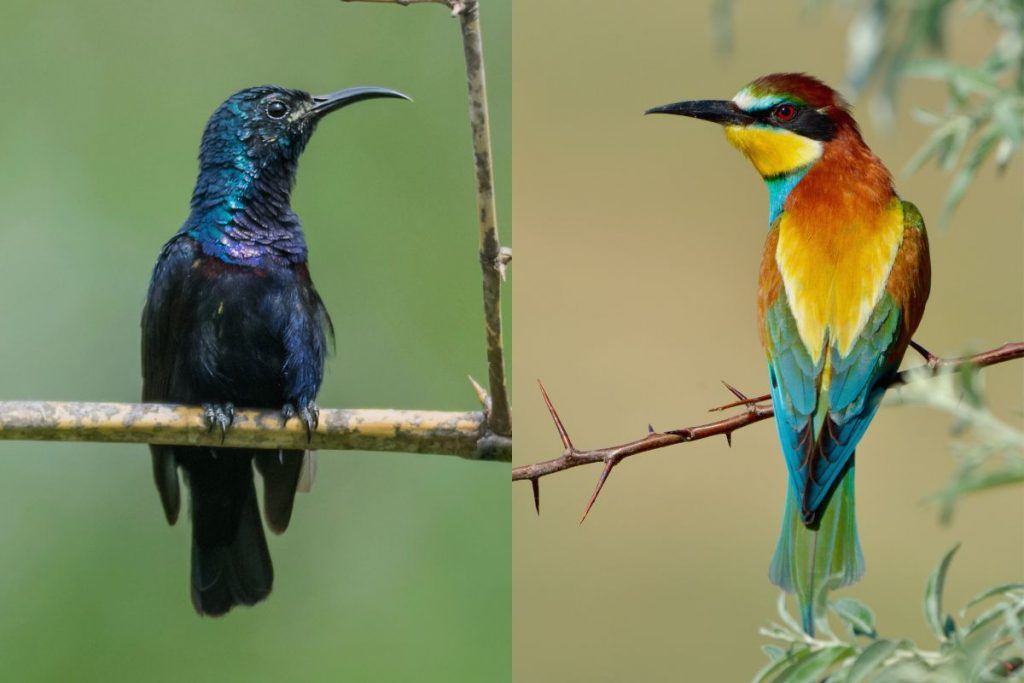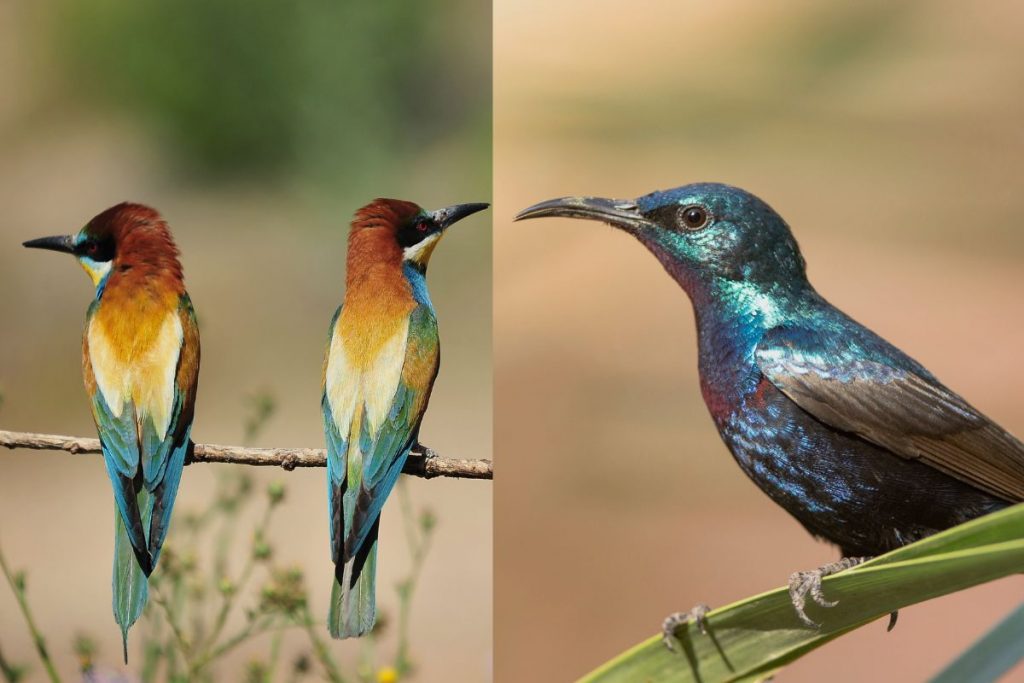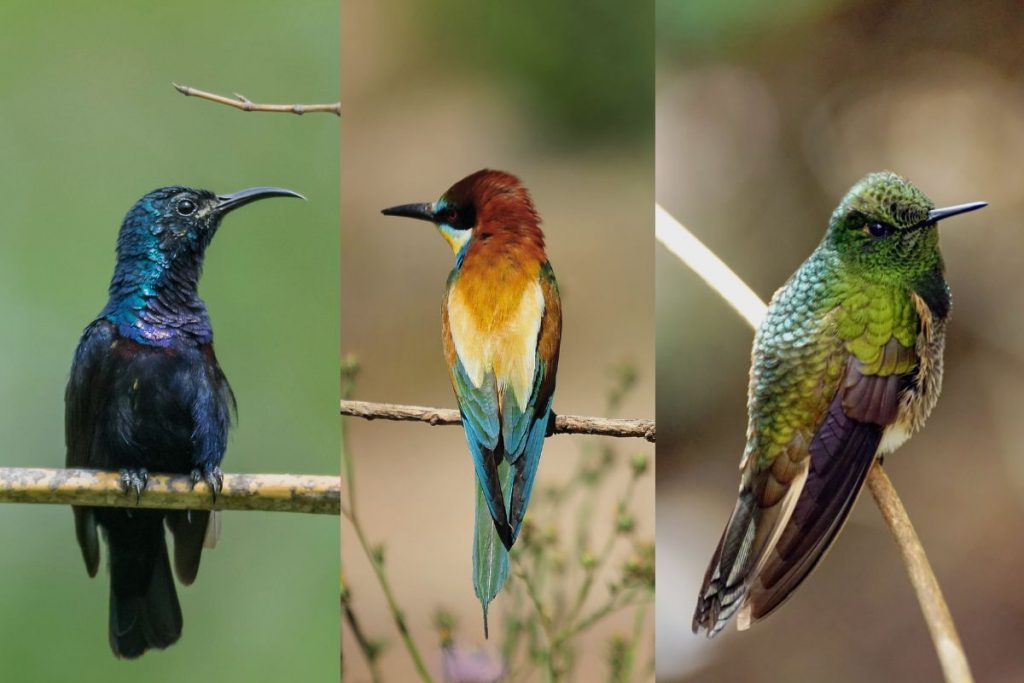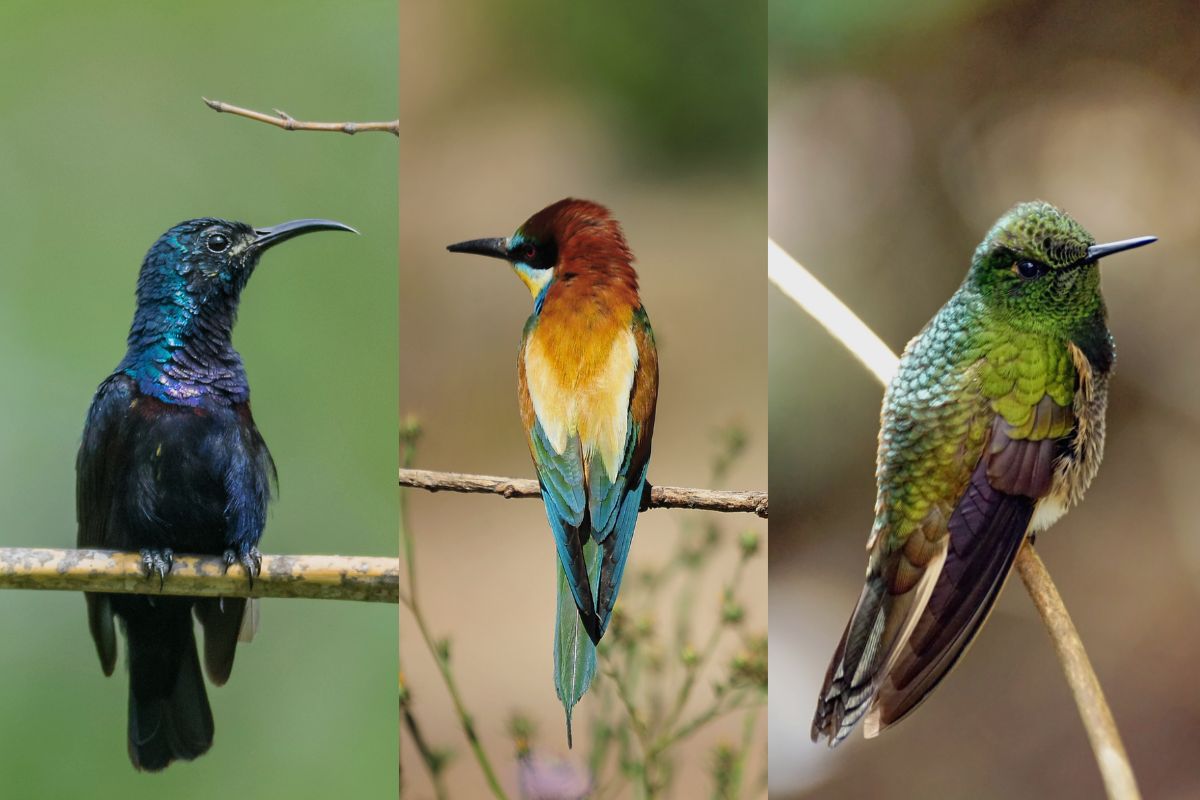No, there are no hummingbirds in Greece. Hummingbirds are native to the Americas and do not live in Europe. Greece has many beautiful birds, but you won’t find hummingbirds there. Instead, you might see other small, colourful birds, such as sunbirds and bee-eaters, that enjoy nectar. So, while Greece has a variety of wildlife, hummingbirds are not part of it.
In this post, we will be exploring the closest relatives of birds to hummingbirds that can be found in this Mediterranean country.
European Birds Like Hummingbirds: Meet Sunbirds and Bee-Eaters
Although hummingbirds are not native to Greece, there are two bird species found in the country that bear a resemblance to hummingbirds, and that’s sunbirds and bee-eaters birds.
Sunbirds
Sunbirds are small, nectar-feeding birds that are predominantly found in Africa and Asia. They are not native to Europe but have been occasionally spotted in Greece, especially during migration. Like hummingbirds, sunbirds have iridescent plumage, and their long, curved bills are adapted for feeding on nectar from flowers.
While sunbirds do not have the remarkable hovering abilities of hummingbirds, they are agile flyers and can be seen flitting from flower to flower in search of nectar.
Bee-Eaters
Bee-eaters are another group of birds that share some similarities with hummingbirds. These colourful, insect-eating birds can be found throughout Greece during the summer months. Although they do not feed on nectar like hummingbirds, their vibrant plumage and agile flight patterns may remind birdwatchers of their American counterparts.
Bee-eaters are known for their acrobatic aerial displays, often catching insects in mid-flight.

Greek Birdwatching: Where to Spot Sunbirds and Bee-Eaters
Greece offers many opportunities for birdwatching enthusiasts to spot sunbirds, bee-eaters, and other unique bird species. Here are some of the best locations to observe these avian wonders:
Halkidiki Peninsula
The Halkidiki Peninsula in northern Greece is home to a diverse range of bird species, including the European bee-eater. This region boasts a variety of habitats, from wetlands and forests to coastal areas, making it an ideal destination for birdwatching. The Axios Delta National Park, in particular, offers excellent birdwatching opportunities, with over 300 recorded bird species.
Lesvos Island
The island of Lesvos is another popular destination for birdwatchers visiting Greece. Located in the Aegean Sea, Lesvos boasts a range of habitats, including wetlands, forests, and coastal areas. The Kalloni Wetlands are a prime location for spotting European bee-eaters, as well as other unique bird species, such as the black stork and the ruddy shelduck.
Rhodes Island
The island of Rhodes, located in the southeastern Aegean Sea, is another birdwatching hotspot in Greece. The Valley of the Butterflies, a unique nature reserve on the island, is home to a variety of bird species, including bee-eaters. This lush valley is also famous for its large population of Jersey tiger moths, which create a stunning spectacle during the summer months.

Creating a Hummingbird-Friendly Garden in Greece
Although hummingbirds are not native to Greece, you can still create a garden that attracts sunbirds, bee-eaters, and other local bird species. Here are some tips for designing a bird-friendly garden in Greece:
- Plant nectar-producing flowers: To attract sunbirds and other nectar-feeding birds, plant a variety of brightly coloured, tubular flowers, such as trumpet vine, honeysuckle, and fuchsia.
- Provide a source of water: All birds need access to fresh water for drinking and bathing. Adding a birdbath or small pond to your garden will not only attract sunbirds and bee-eaters but also a wide variety of other bird species.
- Offer nesting sites: Encourage birds to set up a home in your garden by providing suitable nesting sites. For sunbirds, consider hanging nesting boxes or providing dense shrubs for them to build their nests. Bee-eaters prefer to nest in sandy banks or cliffs, so if you have a suitable area in your garden, consider leaving it undisturbed for them to use.
- Avoid using pesticides: Pesticides can be harmful to birds and other wildlife. To create a bird-friendly garden, opt for organic gardening methods and encourage natural predators to help control pests.
- Provide perches: Birds like sunbirds and bee-eaters enjoy having a place to perch and survey their surroundings. Adding a few strategically placed branches or tall plants in your garden can provide the perfect lookout spots for these feathered visitors.
Conclusion: Embracing Greece’s Unique Avian Wonders
While hummingbirds may not grace the skies of Greece, the country is home to a diverse range of bird species that share some similarities with these fascinating creatures.
By exploring the birdwatching hotspots of Greece and creating a bird-friendly garden, you can enjoy the beauty and wonder of sunbirds, bee-eaters, and other unique avian species native to this Mediterranean paradise.
So, grab your binoculars, head out into nature, and embrace the incredible world of birds that Greece has to offer. Who knows – you might even be lucky enough to catch a glimpse of a rare sunbird during your adventures!
Image Gallery – Are There Hummingbirds In Greece?



Related Posts to Read:
References:
- About Hummingbird (Wikipedia).
- About Greece (Wikipedia)
- Greenewalt, C. H. (1960). Hummingbirds. New York: Doubleday. Google Scholar.
